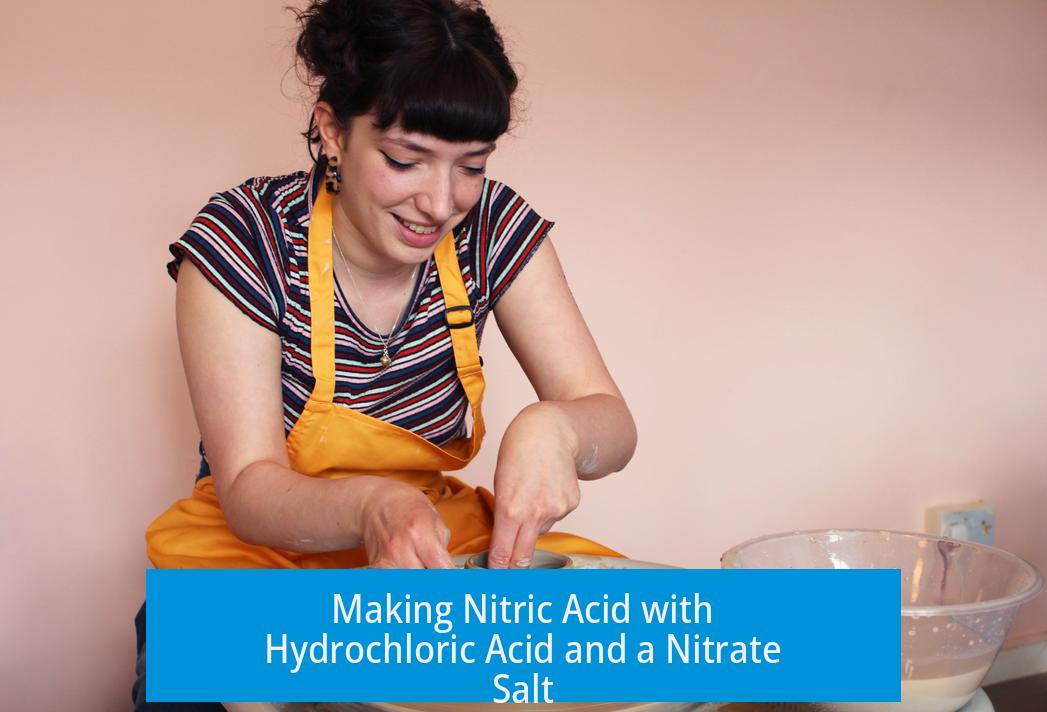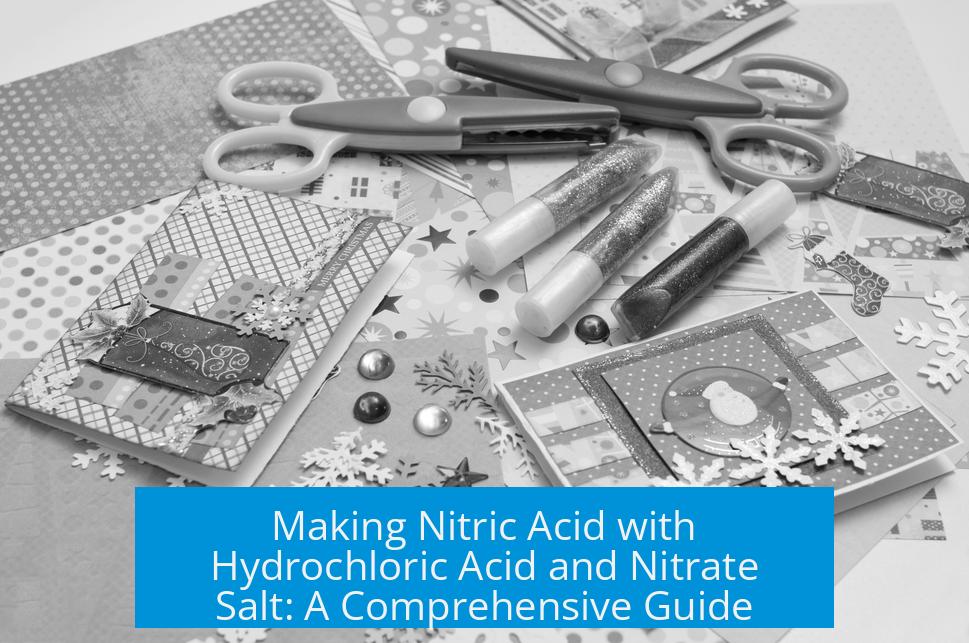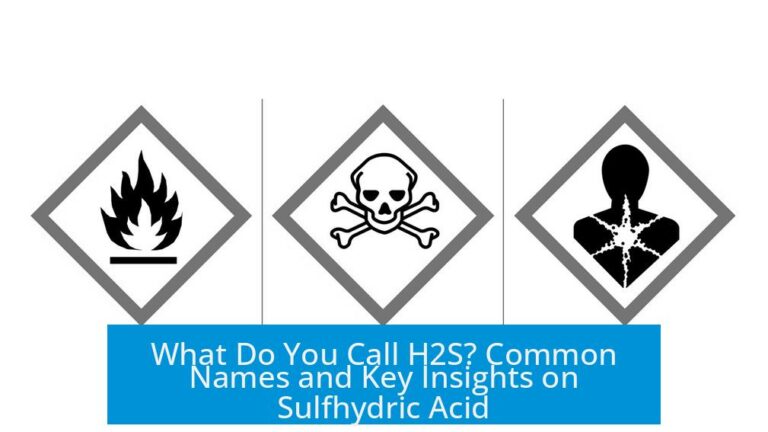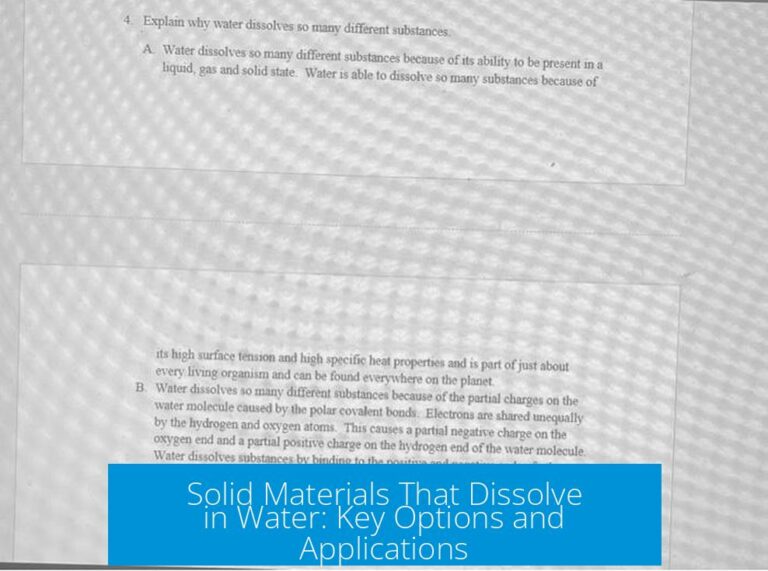Making Nitric Acid with Hydrochloric Acid and a Nitrate Salt

Hydrochloric acid cannot be used to produce nitric acid from nitrate salts because it co-distills and reacts with nitric acid to form aqua regia, a highly reactive and dangerous mixture. Instead, concentrated sulfuric acid is required to generate nitric acid effectively.
Why Hydrochloric Acid Is Unsuitable
Hydrochloric acid (HCl) lacks compatibility when attempting to produce nitric acid by distillation from nitrate salts. The main issue is that HCl will distil together with nitric acid (HNO3), contaminating the product and preventing efficient isolation.
Moreover, when hydrochloric acid mixes with nitric acid, the combination forms aqua regia, a potent mixture known for its ability to dissolve noble metals like gold and platinum. This mixture is unstable and dangerous to handle outside controlled conditions.
- HCl co-distills with nitric acid, causing contamination.
- HCl reacts with nitric acid to form aqua regia, a hazardous mixture.
It is specifically advised not to use HCl in this preparation because the presence of aqua regia complicates purification. Separation of aqua regia back into individual acids is challenging and hazardous, especially for inexperienced chemists.
Proper Reagents: Concentrated Sulfuric Acid and Nitrate Salt
The correct reagent to convert nitrate salts into nitric acid is concentrated sulfuric acid (H2SO4), not hydrochloric acid. The sulfuric acid acts as a dehydrating agent and proton donor, liberating nitric acid from nitrate salts by chemical displacement.
The standard procedure involves slowly dripping concentrated sulfuric acid onto a dry nitrate salt, such as potassium nitrate (KNO3), in a flask. The reaction produces nitric acid vapors that can be collected by distillation.
Reaction Chemical Equation
| Reactants | Products |
|---|---|
| KNO3 + H2SO4 | KHSO4 + HNO3 |
This acid-base reaction replaces the potassium ion with the hydrogen ion, forming potassium bisulfate (KHSO4) and releasing nitric acid (HNO3) as a vapor.
Temperature Control and Distillation Conditions
Heating is generally unnecessary and even undesirable during this reaction. The process relies on controlled addition and the exothermic nature of the acid-base reaction to generate nitric acid vapors.
- Avoid excessive heating to prevent water vapor contamination.
- If the flask temperature rises sharply, reduce the acid drip rate.
- Distilling off water will dilute the nitric acid product.
The aim is to collect nitric acid vapor without water or sulfuric acid contamination to obtain 90–95% pure HNO3.
Maximizing Nitric Acid Yield
A air flow can improve the yield and purity of nitric acid produced. By gently pumping air into the reaction flask, the vaporized nitric acid is swept into the condenser and receiver more effectively.
An aquarium air pump suffices for this task. Key precautions include ensuring the air inlet tube remains above the liquid level in the receiver to avoid liquid backflow, which could damage the reaction setup.
- Use a gentle air stream to sweep vapors into the condenser.
- Keep the air inlet above the receiver liquid level to prevent back-siphoning.
- Monitor the reaction closely to adjust air flow as necessary.
Safety Considerations When Producing Nitric Acid
Nitric acid vapor poses significant health hazards. It is corrosive, toxic, and can severely damage the respiratory system upon inhalation.
- Work only in a fume hood or outside in well-ventilated conditions.
- Avoid direct exposure to acid vapors and corrosive gases.
- Wear suitable personal protective equipment (PPE), including neoprene gloves, chemical-resistant apron, and eye protection.
Ordinary latex or nitrile gloves are insufficient and can catch fire upon contact with concentrated nitric acid vapors. Use thick, chemically-resistant gloves such as neoprene.
Furthermore, the red nitrogen dioxide (NO2) gas that may form especially during reactions with metals like copper is lethal if inhaled. Special care is needed to prevent inhalation.
Equipment Recommendations and Protocols
- Use glass wool for thermal insulation instead of cotton to avoid ignition risks.
- Ensure apparatus connections are secure to contain corrosive vapors.
- Have neutralizing agents and emergency protocols in place for spills or exposure.
This synthesis is unsuitable for novices due to the risks of chemical burns, inhalation hazards, and explosive mixtures forming if mishandled.
Dealing with Aqua Regia If HCl Is Used by Mistake
If hydrochloric acid is mistakenly mixed with nitric acid vapors, aqua regia forms. This mixture is not only highly reactive but also difficult to separate into its components.
The presence of aqua regia complicates purification and reagent recovery, increasing risk. Experts recommend discarding such mixtures safely rather than attempting separation, especially outside controlled laboratory conditions.
- Aqua regia cannot be easily separated into HNO3 and HCl.
- Handling requires specialized equipment and knowledge.
- Dispose of aqua regia mixtures according to hazardous waste protocols.
Summary: Key Points on Making Nitric Acid from Hydrochloric Acid and a Nitrate Salt
- Hydrochloric acid cannot be used to produce nitric acid from nitrate salts because it co-distills and forms aqua regia.
- Concentrated sulfuric acid is the correct reagent to react with nitrate salts to release nitric acid.
- Slowly drip concentrated sulfuric acid onto dry nitrate salt without excessive heating.
- Use gentle air flow to increase nitric acid vapor yield and avoid liquid backflow.
- Nitric acid vapors are highly toxic; perform synthesis in a fume hood with appropriate PPE.
- Neoprene gloves and chemical-resistant gear are necessary; avoid nitrile and latex gloves.
- Red nitrogen dioxide gas is hazardous and must be controlled carefully.
- Never attempt to produce nitric acid by mixing HCl and nitrate salts due to aqua regia formation.
- Synthesis is unsuitable for novices because of significant safety risks.
Can hydrochloric acid be used to make nitric acid from nitrate salts?
No. Hydrochloric acid co-distills with nitric acid and contaminates it. Instead, concentrated sulfuric acid must be used to react with the nitrate salt to produce nitric acid.
How should sulfuric acid be added to nitrate salt for nitric acid production?
Drip concentrated sulfuric acid slowly onto dry nitrate salt. Avoid excessive heating. Control reaction speed to prevent water vapor from distilling with the nitric acid.
What methods increase the yield of nitric acid in this reaction?
Pumping a small amount of air through the reaction flask into the receiver enhances nitric acid yield. Use an aquarium pump. Ensure the air intake tube does not dip below the liquid level to prevent backflow.
What safety measures are necessary when making nitric acid this way?
Perform the reaction in a fume hood or outdoors. Nitric acid vapor is toxic and corrosive. Use thick neoprene gloves and avoid latex or nitrile gloves, which can catch fire. Proper ventilation and protective gear are essential.
What happens if hydrochloric acid accidentally mixes with nitric acid during preparation?
They form aqua regia, a highly reactive and dangerous mixture. Separating the acids is difficult and risky. It is advised to discard the mixture and avoid this accidental combination, especially if inexperienced.





Leave a Comment